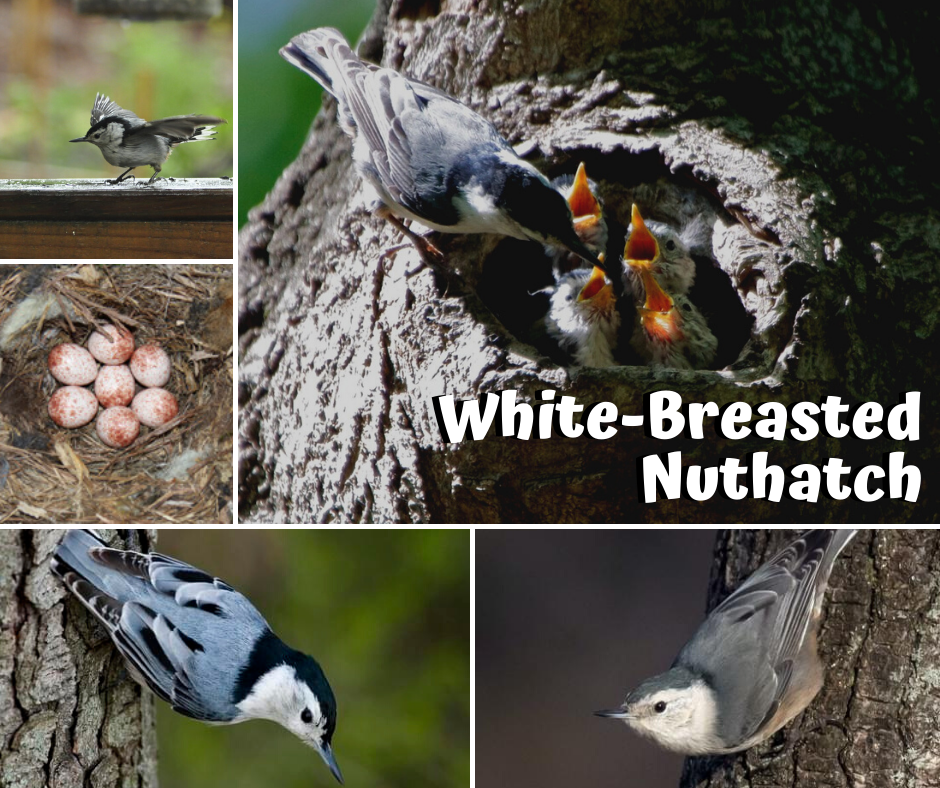White-Breasted Nuthatch
By: Heather Ficke

As the weather begins to warm you may start to see (and hear) a great many winged visitors showing up in your yard. Today, let’s meet the White-Breasted Nuthatch. This interesting songbird has a sweet call and some unusual behavior which sets it apart from all the others.
What Do They Look Like?
This unassuming, compact-sized bird has a blue-gray body, white cheeks and almost no neck. The best way to tell the males from the females is by looking at the tops of their heads. Males will be black, while females will be gray.
How Do They Sound?
Open your ears to their call and you may think it sounds a little like a laughing monkey. They give a fast, wah-wah-wah call that lasts about 3 seconds, with each note sounding the same. If you hear them calling at what seems like twice their normal speed, you know there is a male somewhere nearby, trying to impress a potential partner! So, what makes this bird so interesting?
What Do They Eat?
Let’s look at some of their favorite foods! They like many of the same things as other birds in our area, including seeds and suet at bird feeders. But they are amazing at consuming stinkbugs, spiders and even tent caterpillars. They also have an interesting way of eating some of their other favorite foods, seeds! Nuthatches have been observed in the wild wedging seeds into cracks in the tree bark, then taping on them with their hard beaks to crack them open.
Sit quietly for a moment watching this bird, and you’ll see it move in a quite unusual way. Walking both up the trunk in “normal” way, but also down the trunk, head first! "How can they do that?” you may be asking yourself. If you can catch sight of this bird standing still for a minute, take a peek at its feet. A nuthatch’s foot has one big toe (the hallux) that faces backward, while its other three toes face forward. By moving only one foot at a time while the hallux toe on the other foot holds firmly to the bark, they can move “upside down” with ease.
While you are out enjoying the spring weather, keep your eyes and ears open for this little, but very interesting, feathered-friend!
Would you like some backyard visits from the White-Breasted Nuthatch? Check out these videos on how to make DIY bird feeders!
NOTE: These videos suggest to use honey or peanut butter, but you can also use shortening
Toilet Paper Roll Bird Feeder
Pine Cone Bird Feeder
Can't get enough of this little bird? Here are some additional resources for you to look at:
https://www.allaboutbirds.org/guide/White-breasted_Nuthatch/lifehistory
https://www.nationalgeographic.com/animals/birds/w/white-breasted-nuthatch/
Keep watching our social media pages for the next installment of Wildlife Wednesdays!
